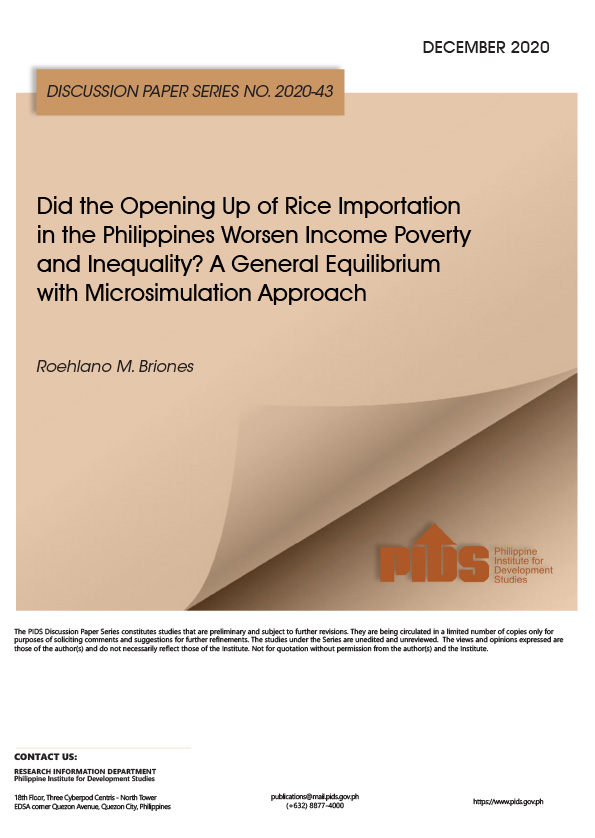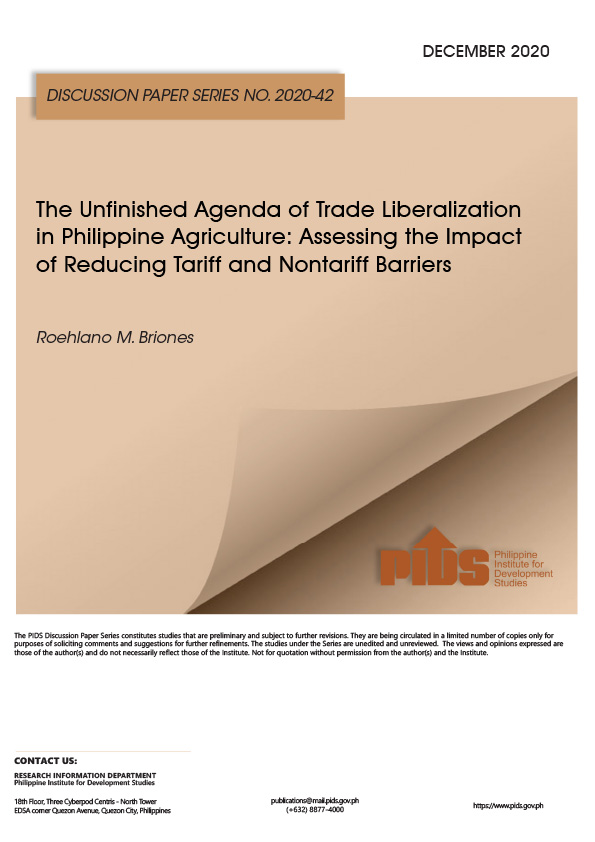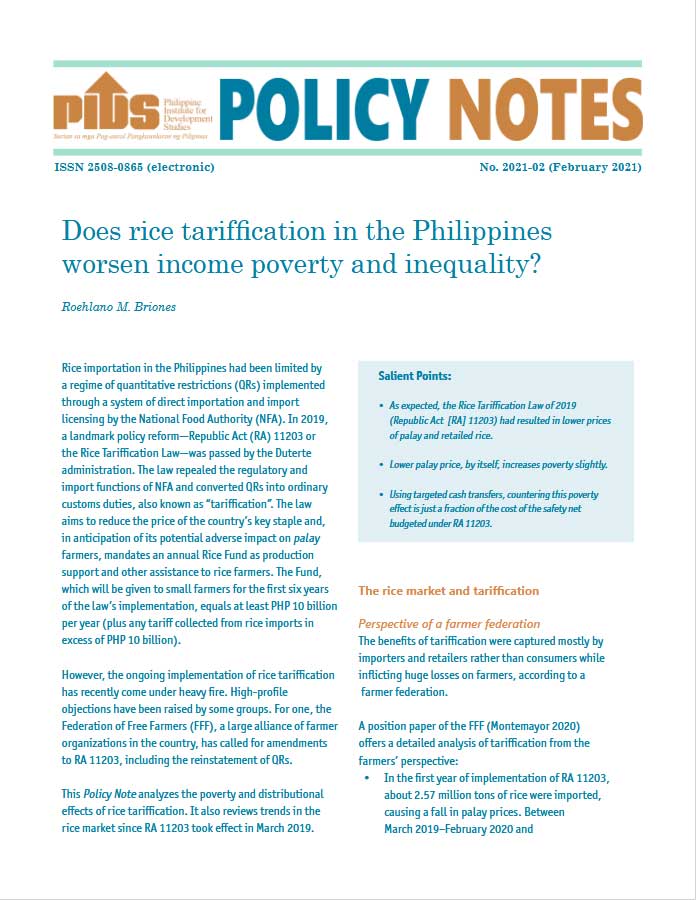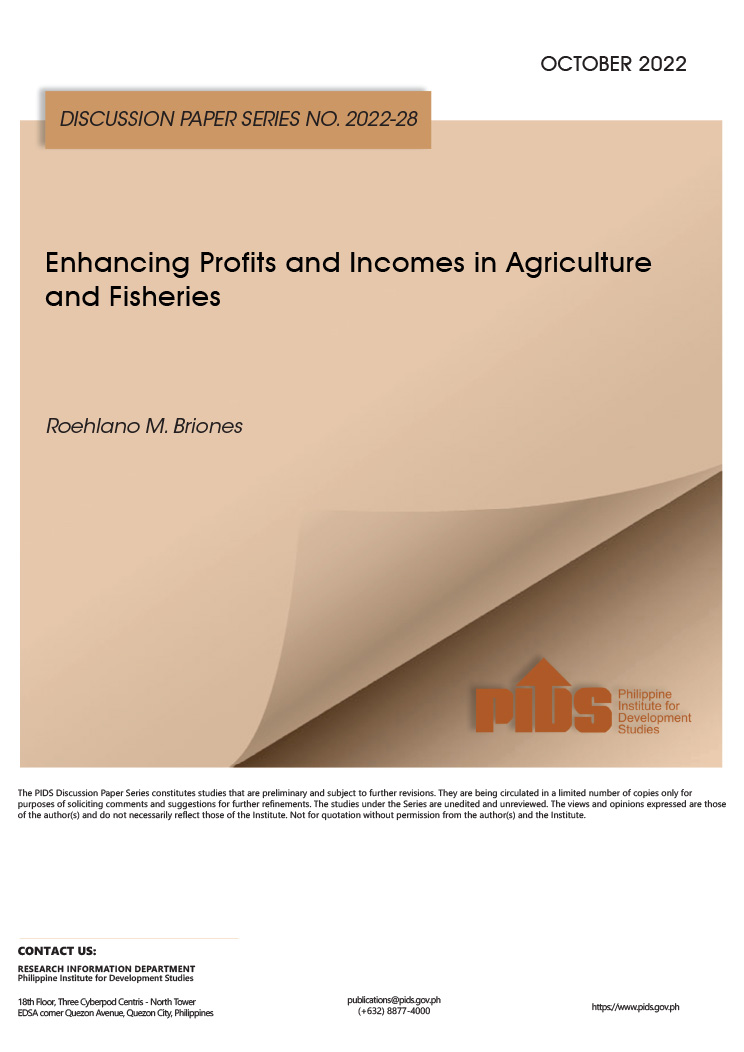Tariffication of quantitative restrictions on rice imports was a key policy reform of the Duterte administration. This study reviews recent trends in the rice market, and assesses the poverty and distributional effects of rice tariffication using a computable general equilibrium model with microsimulation. Owing to the price difference between domestic prices in Philippines and exporting countries, imports of rice have surged under tariffication. As a result, domestic prices have fallen, though gross marketing margins have increased, amplifying the effect of the drop in retail prices on both wholesale prices and palay prices. The price and associated economic adjustments are expected to cause an increase in income poverty as conventionally measured. However, the increases are rather small, and would diminish over time. The value of the income loss suffered by the poor is far below what the amount provided by law to address problems in the rice economy with tariffication.
Comments to this paper are welcome within 60 days from date of posting.
Email publications@mail.pids.gov.ph.
Citations
This publication has been cited 1 time
- Karl R. Ocampo . 2021. Study: Toil in the fields will be long before tariffication benefits arrive. Inquirer.net.













